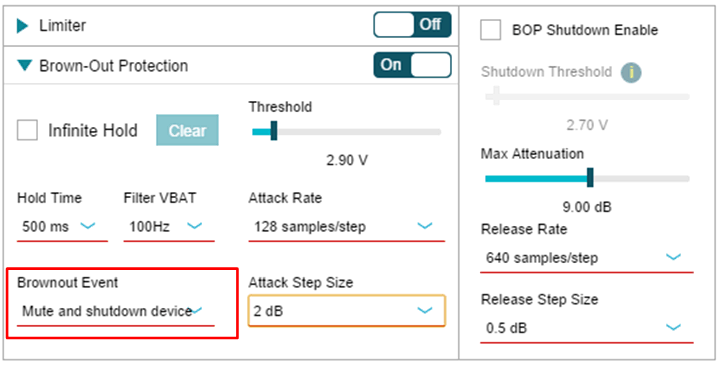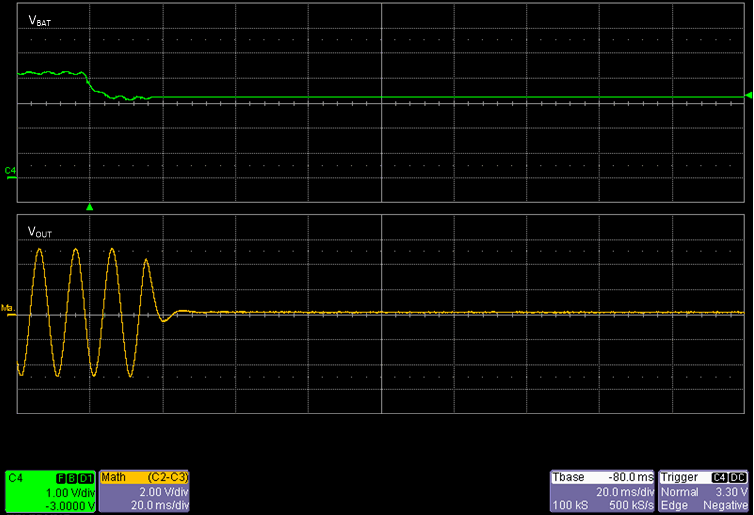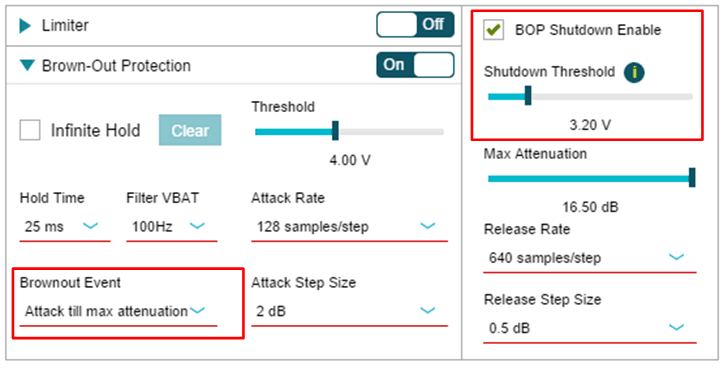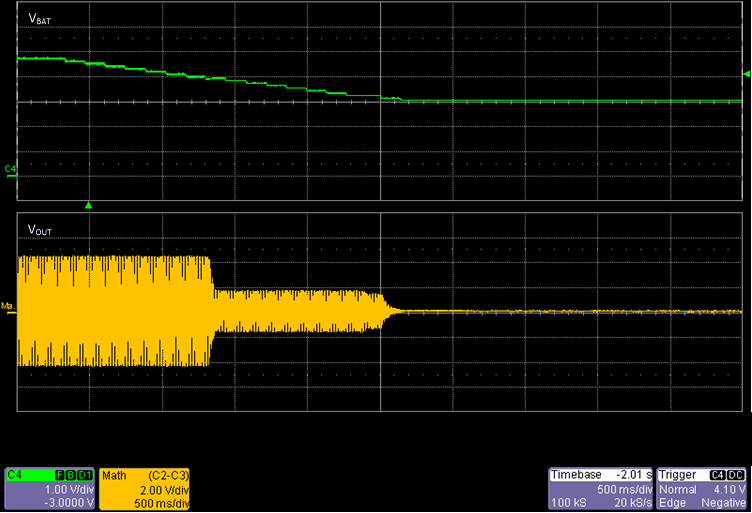SLAA899 December 2019 TAS2110 , TAS2555 , TAS2557 , TAS2559 , TAS2560 , TAS2562 , TAS2563 , TAS2564 , TAS2770
5 Brown Out Protection (BOP)
The BOP feature also utilizes internal VBAT tracking. When BOP is triggered, it can respond in one of two ways. Either it will shut-down the audio amplifier and put it in a low power state, or it will attack to a maximum gain attenuation setting. The benefit of this function is to prevent system level collapse that would impact resources outside of the audio amplifier. It allows the system time to respond to the low voltage condition and properly shutdown.
 Figure 7. BOP Profile Settings
Figure 7. BOP Profile Settings  Figure 8. BOP Mute and Shut Down
Figure 8. BOP Mute and Shut Down Brown out protection may be set for infinite hold. When this is selected the brown out event will not reset until the device transitions through either mute or shutdown.
With infinite hold disabled, BOP operates much like the voltage limiter. It has independent attack settings from the limiter, but will share the release settings.
A separate Max Attenuation control is also available. This setting differs from the minimum voltage threshold which governs the limiter response. Max Attenuation sets an absolute limit for attenuation regardless of the limiter profile. It is typically should be set at or lower than the minimum voltage threshold for the AGC and is used primarily with the brown out protection feature. When attacking to max attenuation, the brown out protection will automatically step all the way to this attenuation level and override the limiter controls. When infinite hold is disabled, attack and release behavior for this state are similar to that of the AGC. However, if the AGC limiter is enabled, the device will restore the outputs to the match the state of the limiter profile and battery voltage conditions. This allows the system to keep audio active at a minimum level until the battery is recharged or the system is shut down appropriately. Attacking to max attenuation during brown out protection may be useful in applications where audio feedback to the user is needed at all times the device is powered on.
TAS2562 and TAS2563 also include a feature that allows for a staged BOP attack. When set to attack to maximum attenuation, a second BOP may be set which will trigger BOP shutdown. This provides a more sophisticated approach when operating near system brown out levels.

 Figure 9. Two Stage BOP Response
Figure 9. Two Stage BOP Response Notice here at 4 V on VBAT that the BOP feature attacks to the maximum attenuation, but as VBAT continues to drop it stays steady up until crossing the 3.2 V threshold. At this time it initiates a full mute and shutdown sequence and puts the device in software shutdown to preserve the system for as long as possible.